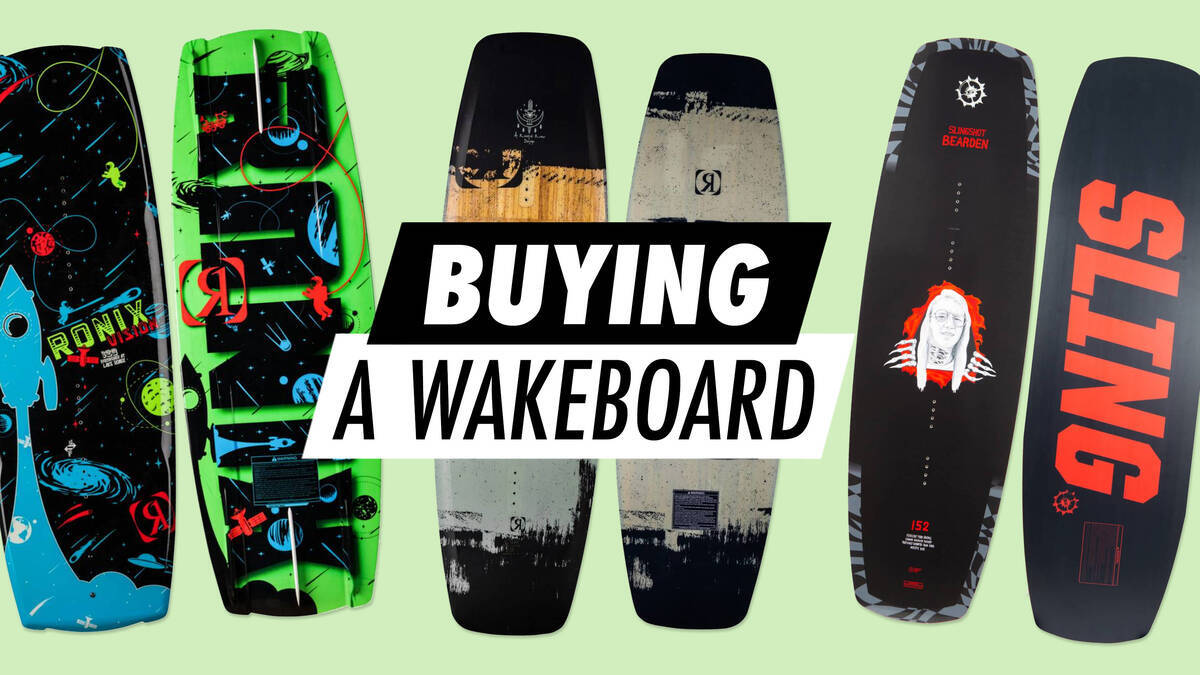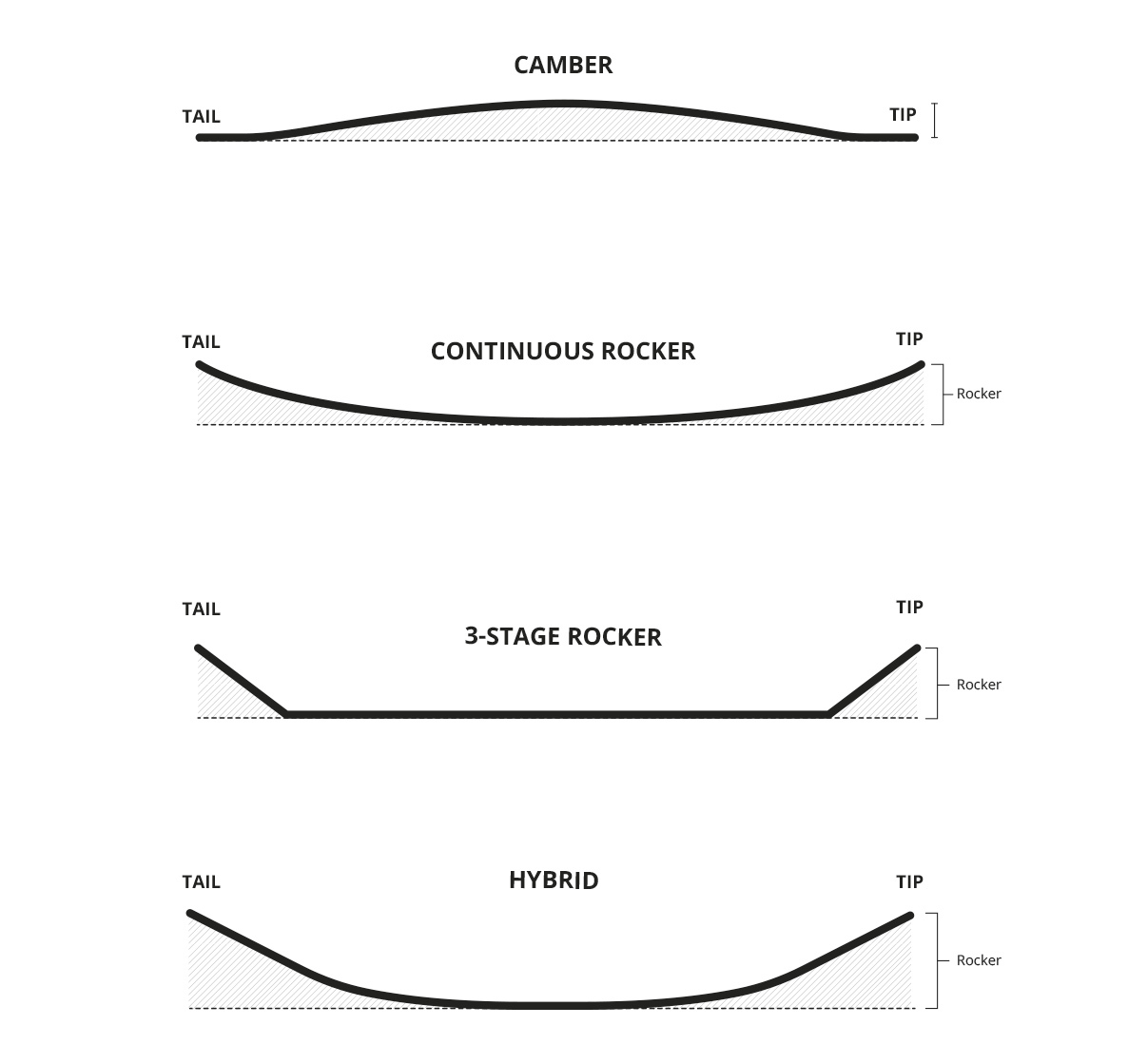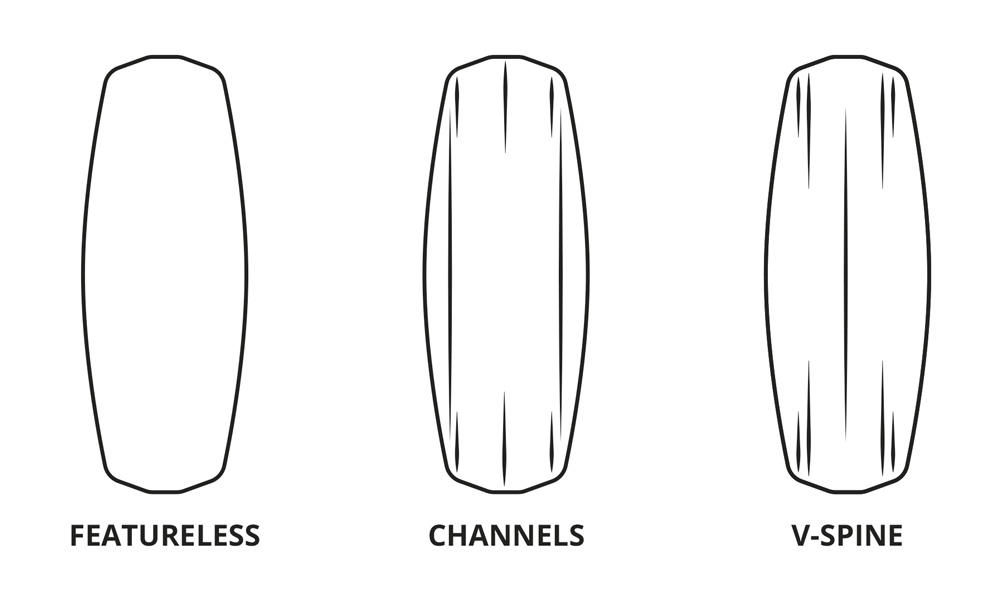Purchasing a Wakeboard

All set to wakeboard? Here's a straightforward guide to consider before you buy your equipment.
1. Types of Wakeboarding and Flex Levels
First and foremost, consider the style of wakeboarding you're aiming for. Wakeboarding can be divided into two categories: cable park and boat wakeboarding. At the cable park, you are pulled by an overhead cable, akin to ski resort drag lifts. These boards offer more flex, have bases without features, and come with removable or no fins. Boat wakeboarding involves being towed by a boat, with boards that are stiffer (less flex), have features aiding easier edging into the wake, and include multiple fins.
You could also opt for a hybrid board, blending attributes of both cable and boat wakeboarding. These boards have medium flex (softer at the tips, stiffer at the centre), a simple base design, and detachable fins.
2. Board Length
The length of your wakeboard is arguably the most crucial feature to assess. This is determined by your weight, and if several people will use the board, it should ideally suit the heaviest rider. Below is a reference table with suggested wakeboard lengths based on weight, along with tips on whether to size up or down.

Note that this is a general guide, thus size recommendations might vary between products.
Should you choose a slightly shorter or longer board?
Opting for a longer board is an increasing trend among both novice and expert riders, particularly those at cable parks. A longer board simplifies the ride, provides a bigger boost off the wake, ensures softer landings, speeds, and controls when attempting tricks for the first time (due to a larger surface area in contact with the water). They flex better, offer larger balance points during presses, and provide more air-trick power.
Smaller boards offer easier maneuverability but are not as quick and require more effort to move through the water (as less surface area contacts the water). Landings can be harder and there's a higher risk of the nose digging in.
3. Rocker Types
The rocker refers to the board's curve profile. Two main rockers are continuous and 3-stage rockers. However, there's a growing presence of cambered (similar to skis and snowboards) and hybrid rockers (a blend of continuous and 3-stage).

- Continuous rocker: Provides a smooth, fluid curved shape, resulting in a faster ride, softer landings, and easy carving. Often preferred for cable park usage;
- 3-stage rocker: Features three distinct planes underneath, allowing higher elevation off the wake. However, it may plough through water rather than gliding, making it slightly slower. Best suited for intermediate and advanced riders, usually for boat riding.
- Camber rocker: A relatively new design, this shape distributes weight evenly, taking pressure off the back foot for a more natural stance. Those accustomed to continuous or 3-stage rockers might take time to adjust.
- Hybrid rockers: Combine features of continuous and 3-stage rockers, with smoother curves in the centre and more detailed tips and tails, suitable for either park or boat conditions.
4. Base Design
Beyond attractive designs, the base of a wakeboard comes in various formats, influencing its ride. Three primary base designs exist: featureless, with channels, and a V-shape spine. Additionally, there are concaves, which are specific dents that create lift and reduce suction.

- Featureless: Lacks incorporated fins or channels; the board's overall shape, rocker, and fins affect the ride;
- Channels: Serve as long, extruded fins to break surface tension when landing and assist in directing water flow.
- V-shape spines: Similar to channels, soften landings and facilitate smoother edge transitions (commonly added to 3-stage rocker boards).
5. Fin Types
Fins are categorised into two main types: molded-in (fixed) and removable. Most beginner boards include both types. You can also ride without fins - beneficial in cable parks for navigating obstacles without snagging a fin.
Fins are generally either long or short. Longer fins provide a stable, predictable ride (ideal for novices), whereas shorter ones offer greater movement freedom and a looser sensation on the water (for intermediate and advanced riders).
6. Board Edges
Lastly, when examining the edges, think about your desired riding style.
Sharp edges are preferred for aggressive riding with deeper water cuts and higher speeds, while round edges cater to more relaxed riders focusing on sliding and surface tricks.
Variable edges blend the attributes of sharp and round edges, offering enhanced sharpness at the tips and tails for grip and cutting, with rounder edges at the centre for a smoother feel.
In Conclusion, When Selecting a Wakeboard, Remember to Consider:
- Your preferred riding type and flex level
- Length
- The rocker
- Base shapes
- Fins
- Edges
And remember - ensure that you always have fun on the water!
